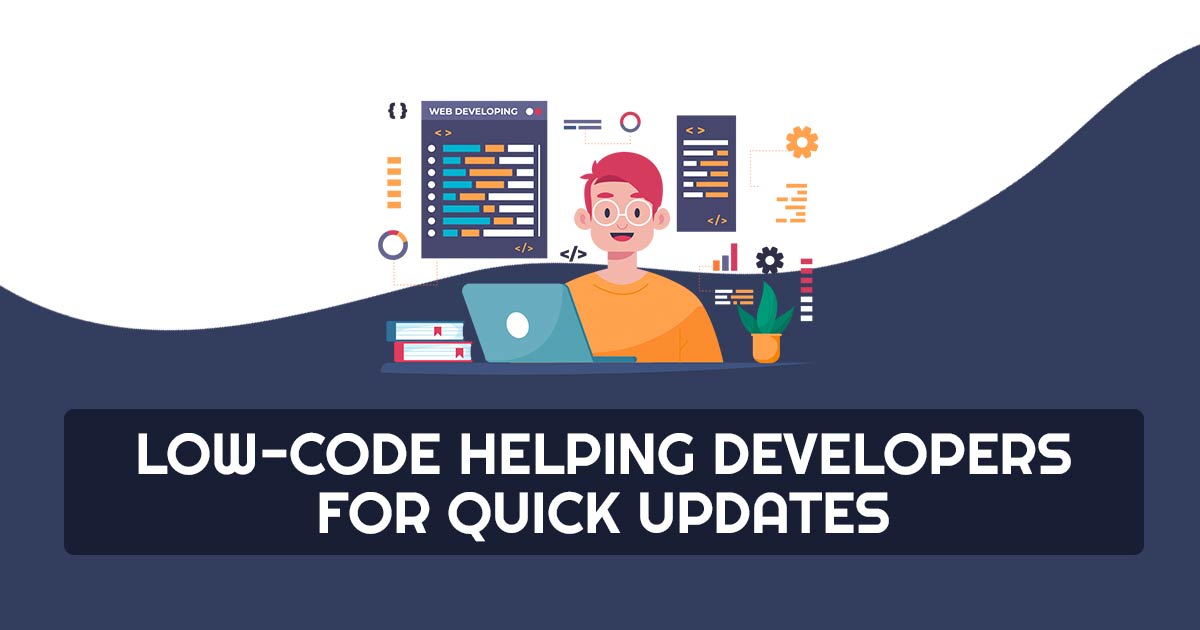
The majority of the routine businesses mechanism would not fully change till the whole adoption of the upgraded software systems. At that time innovations would take various years to arrive in the mainstream also the companies can afford to lay on the older mechanism including monolithic technology architectures.
At the current times, the amendment in the world of businesses is the only constant that suffers unusual trouble since the same attempts to handle the increasing instability at the global supply chains along with successive needs of the customer.
Under these rising uncertainties, business people suffer from the pressure for upgrading with time. For making the employee motivated, and customers happy and to meet the need for operational stability there would be a requirement for successive revision. Hence the command to adapt to the change would become a universal business obligation.
All these factors depend on the software. In some former years, Microsoft CEO Satya Nadella told, every firm is said to be a software company. In every field, at home or in the workplace technology is being upgraded. The back office team would lay on tailor-made customer relationship management (CRM) and the company’s resource planning (ERP) solutions to manage the surged bigger amounts of digital data. Customer anticipates responsive service along with the presence of the companies from which they used to perform the business. While all these demands vary with time, hence there is a need for a robust approach to software development and maintenance.
The same is the reason why low-code software development would have gained popularity with the passage of time.
Development Cycle of the Traditional Software
Traditional software takes much more time and is complex this is due to the reason that the same engaged manually recreating specifications and operates multiple times and partly as the same needs skills that consume years to learn. The development of bespoke business apps takes months or years as per the complexity and scope.
The initial stage of the development cycle of the software would be scoping the needs and aligning them as per the requirement of the business. It consumes months or exceeds that for the case of the larger projects as the same needs high-level meetings with the stakeholders for drawing transparency in the project about the need and furnishing the relevant budget.
In 2nd stage, the user interface design would be the vital portion as per the need. It consists of wireframing or making the designs by hand. The same would require testing and improvement that could simply take more than 2 months.
The 3rd stage consists of making the software. The same would be the complicated and multiple procedures that consume numerous milestones and comprehensive alpha testing. The process of development could take 6 or exceeding months for the bigger project.
The fourth stage consists of beta testing and development of the production environment. For larger projects, it may consume much more months prior the software is ready to deploy company-wide.
The last stage is that all the software needs maintenance and updates all through the time stages of support. The same stages would be described by the software vendors during the release of their products. Also, the internally developed software could get assistance at infinite times, and doing the same would leave a bigger price load on the project. Laying on traditional software that was made long ago was the major barrier that interrupts innovation in established companies, the cost of traditional software development would also be very high.
The complete mechanism would not be efficient in fast-changing environments. If it consumes time and releases mission-important software products, a higher possibility of those products being practically outdated prior they fully deployed. If that occurs the growth of the businesses comes to an end due to the older and inefficient technology, and the bigger thing is that a brand would lose itself and its innovation would get sluggish.
Step up Low-code Software Development
Under the project’s complexity, as compared to custom coding a low code would cut the software development times by 50% to 90%. The same could indeed diminish spending by 20% i.e prior to considering the long-term savings linked with simpler software maintenance and a lesser requirement for professional developers. The same specifies the value of the low code in assisting businesses to ease quick revision.
The companies could react to the changes in the market in much lesser time by diminishing the software development lifecycle (SDLC), and by performing the same to develop a competitive edge. It would be applicable for businesses that utilize the low code to build back office solutions such as CRM software. Therefore the same directed to the productivity of the employee that could rectify quicker. If the employees give a productive performance, more satisfied would be the client.
If professional developers use the interface of drag and drop in the low code would facilitate the faster execution of the functions of the businesses. For experienced coders, the same would secure the time and reduces the human error risks linked with writing and testing code manually. For local developers and business technologists in departments excluding IT, this directed that making solutions that align with department-specific takes lower time and effort as no requirement would be there to stay on IT.
Recommended: Essential Things Every Company to Know About LCNC Software
Professional developers could utilize their expertise to advance innovation through the surged scalability and smaller project backlogs and the citizen developers and business technologists could provide the solutions within time to fulfil the requirement. By making the low code an integral portion of the business planning, the business could deploy as well as iterate the new applications quicker and change the current legacy systems, and elements based on the cloud.
Overcomes the Gaps By Software Development Skills
There is a rise in the requirement for professional software developers, and a continuous gap rise in skills would be there. But via diminishing the restrictions to entry, a low code would empower distinct people to engage in the development of software.
The coming generation already has an insane interest in the technology and expects to get directly proceed to the low code development environment, despite having any experience in programming or software testing. With the environment of the technology, they would take an interest to learn about the modern digital experiences that customers and other end users anticipate.
A low-code platform authorizes people to operate on software development projects, the same might be possible to lessen the development times. For instance when the sales department would see to execute a new customer engagement application then a low-code platform may permit them to make one in a case of days excluding staying on the IT department. Also, you can be interpreted that low-code democratizes software development by allowing separate business operations to address their own requirements and collaborate seamlessly in the bigger projects.
The revision in the requirement seeks accelerated development, which would not be possible to obtain if laid on the former software development. Indeed not excluding bigger expenses. The business is able to answer fastly and attain a benchmark by drawing more employees in the procedure of the development of the software and lessening the complexity of the project.








